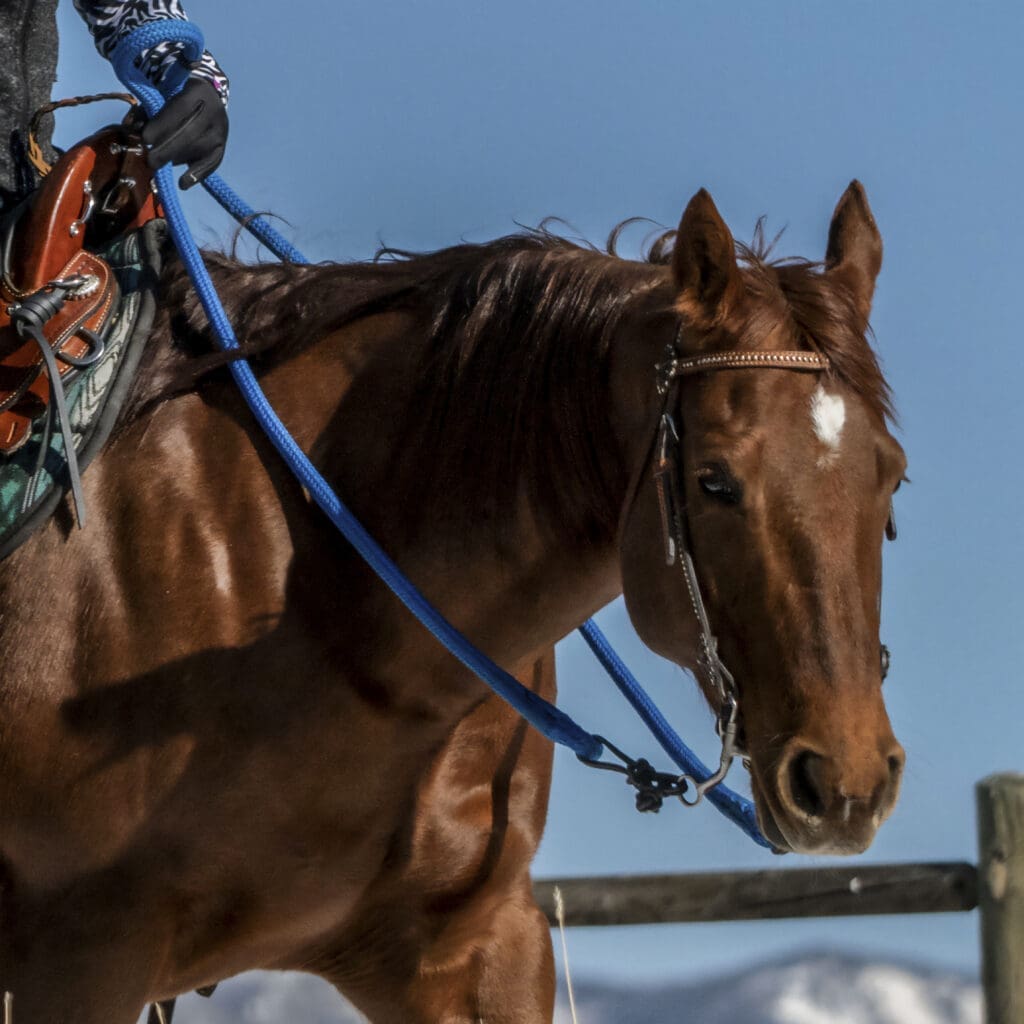Could you Stop a Runaway Horse?

Proper Rein Handling
I’ve just returned from teaching clinics at the C Lazy U Ranch, where I always work with attendees on rein holds, rein length, and stopping aids. Riding a horse you are unfamiliar with in a wild and uncontrolled environment like the Rocky Mountains, can be exciting. Add an encounter with a moose and her calf or a bull elk to the equation, and it can make for an exhilarating ride! Even though the trail horses at C Lazy U are rock solid and highly experienced in the mountains, stuff happens. But riding in the high country comes with many rewards.
If I’ve learned anything in my career, it’s that riding instructors and trainers are not very good at teaching riders proper rein management and how to stop their horses properly, in any situation. One of the reasons this always comes up at C Lazy U, besides riding in the wilderness, is that they use split reins on the horses. Split reins can feel awkward if you are not used to them. Other types of reins may be more user friendly and I designed my reins specifically for their ease of use. Here is some additional information about reins and how to safely handle them.
Riding is a constant process of shortening and lengthening reins, depending on the situation and what you are asking of the horse. Yet we tend to teach riders to have a static grip (an unchanging hold on the reins). Furthermore, because of the way we tend to teach, riders become over-reliant on reins to turn and stop, without using the more important and effective aids, like your seat and legs. For more information about using natural aids effectively and productive communication with your horse, click here. Goodnight Training Videos
I teach riders that reins are not for cueing. They are for reinforcing the cue when the horse does not adequately respond to a cue given with your other aids. In other words, I give the cue to stop with my seat, my weight, my legs, and my voice. If none of that works, I go to the reins. When you learn to use reins as reinforcement and not the cue, without fail, the horse learns to stop well off your seat and legs.
Still, no matter how well you ride and how reliable your horse is, you may one day encounter a situation that triggers your horse’s flight response. Maybe you are riding in a group and one horse spooks but they all react. Maybe you are taking your horse into a situation he was unprepared for and he becomes overwhelmed. Or maybe you are on a glorious ride in the Rocky Mountains and you come upon a herd of elk. By nature, horses are flight animals and if you ride long enough, you’ll probably end up on a wild ride one day.
Knowing how to stop a runaway horse is important to your safety and it will increase your confidence. Given that you are sitting on a 1000# keg of dynamite, it’s a really good thing to know how to apply the emergency stopping rein. Also known as the pulley rein, it’s a valuable skill to have, yet not enough riders know it.
I’ve written/podcasted/videoed a lot on this subject, so my online horsemanship Library is full of content on the emergency stop. The video below gives you a useful guide to learn how to deploy the pulley rein and gives you helpful suggestions for practicing the skill. If you don’t know it already, make a commitment to learn and practice this important safety skill. Should you ever find yourself on a bolting horse, or in a situation where you’ve lost control, you’ll be glad you did!

